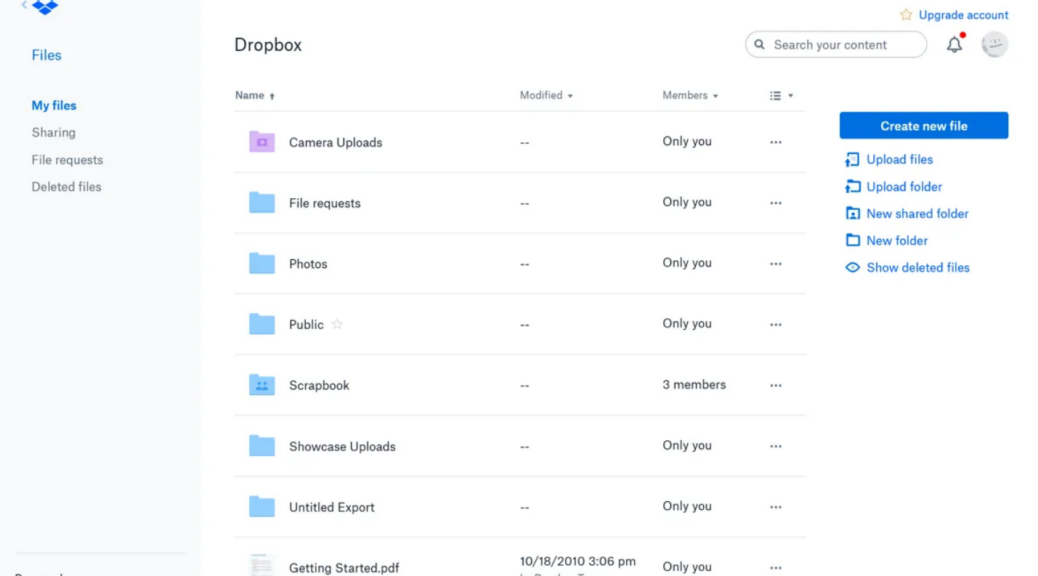In the same way as other virtual data rooms, Dropbox considers combinations with its procured data room supplier, DocSend. This provides clients with an additional arrangement of elements, including layouts for NDAs, due diligence, raising support, executive gathering minutes, financial backer reports, and numerous other use cases.
The most effective method to set up Dropbox
Getting Dropbox set up on your framework is straightforward. You can snatch the application for every one of the significant platforms — even Linux, which you can drop onto your server through the order line:
- Windows/Mac
- iOS
- Android
For the reasons for this aide, we’ll stroll through the Mac installer; however, Dropbox ought to be not difficult to set up on the off chance that your favored platform isn’t Apple’s. On the Mac, at any rate, you truly don’t need to respect anything until the application introduces and you’re given Dropbox’s login screen. Assuming you, as of now, have a record, enter your certifications. Simple.
If you don’t have a record, in any case, fight the temptation to make one at this time. You ought to check whether any of your Dropbox-utilizing companions will welcome you into the help with a reference code. Assuming this is the case, they (and you) will get 500MB of let-loose capacity when you sign. If you have no companions who use Dropbox, finding an outside reference online ought not to be exceptionally hard (and ensure you utilize similar networks/platforms to captivate others to utilize your outside reference.
Cooperation and record management highlights
Since it was planned basically as a record facilitating framework and formed into an undeniable data room just a while later, Dropbox is getting up to speed with the coordinated effort and report management perspectives. A key distinction is that these days the best VDRs offer AI elements, for example, optical person acknowledgment for searchers, auto-ordering, and even business bits of knowledge in light of client access designs.
While Dropbox doesn’t have that, it offers some helpful VDR functionalities, for example:
- Movement following. Keep track of clients’ commitment with explicit records, get informed when new documents are seen, and effectively access an outline of client commitment across your data room.
- In-platform online endorsements. Dropbox’s own HelloSign innovation gives clients various layouts for gathering marks safely and without leaving the platform space.
- Mass transfer/download. Upload however many records you like without worrying about measuring constraints. Perform fast, intuitive activities for speedy transfers and moves.
- Secure connection sharing. Share documents or envelopes through a suitably protected, effectively cancellable connection.
- Convey welcomes. Bring new clients to your data room with custom email welcomes.
- Disconnected admittance. Switch disconnected mode to continue to chip away at your records even with diminished web access. When you’re back on the web, changes will be matched up to your data room.
- Use across any gadget. Windows or Mac, Android or iOS — the Dropbox application is viable with any working framework and is open through your program.
Important that virtual data rooms are discrete tasks made explicitly for specific, time-touchy exchanges. Where VDRs give this protection on an undertaking-to-project premise, Dropbox keeps everything in one primary organizer, supplying the customer with an ocean of all of their information in one spot. Organizations can make separate spaces for discrete arrangements by utilizing appropriate virtual data rooms, for example. Dropbox doesn’t permit that.

